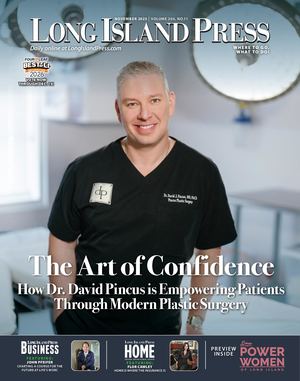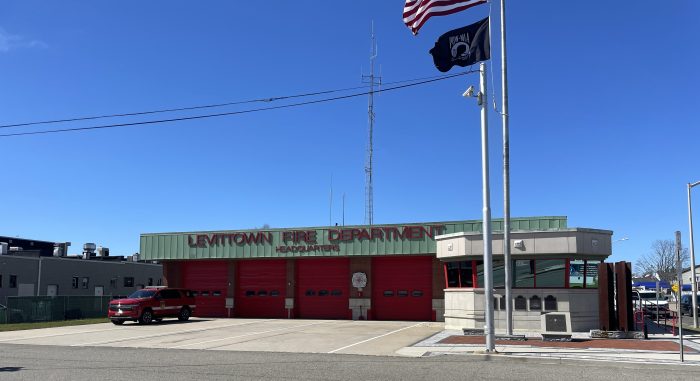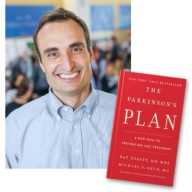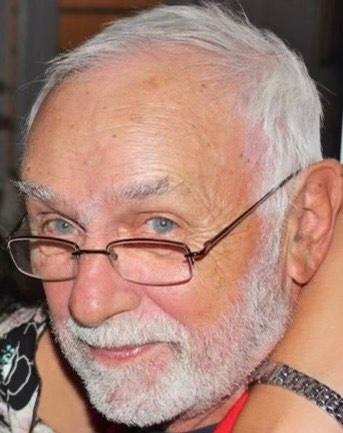A Connecticut developer is looking to revive century-old plans for a bridge to connect Connecticut and Long Island.
“It would be a game-changer,” Steve Shapiro said. “There are over 3 million people living on Long Island and there are over 3 million people living in Connecticut. Wouldn’t it be amazing if a 14-mile span could connect all of them?”
Shapiro is right. If you ignore local communities in Oyster Bay, such as Oyster Bay Cove and Locust Valley, and all the neighboring communities that would be impacted by a tunnel or bridge over or under the Long Island Sound.
A bridge or tunnel linking Long Island with Connecticut could cut travel time between the two states to a fraction of its current hours-long trip and better connect Long Island with the rest of the Northeast.
On the surface, this is an appealing idea that goes back more than a century and like something out of the “Walking Dead” zombie saga never seems to die.
A cross-Long Island Sound crossing would certainly help reduce traffic in New York City, particularly on bridges such as the Whitestone and Throggs Neck.
The problem is where that traffic from Brooklyn, Queens and Manhattan would go – Long Island.
Often, this would involve local communities in Oyster Bay, such as Oyster Bay Cove and Locust Valley. This would be achieved by acquiring property in these suburban communities to build highways that would take you to a bridge or tunnel, at a cost of tens of billions of dollars, not to mention a decrease in property values for those living adjacent to the highways.
The problem is similar on the Connecticut and Westchester side of the Long Island Sound, which is why the opposition to proposals has been so strong for so long.
The idea of a Long Island–Connecticut crossing first surfaced seriously in the 1930s, as automobile use exploded and Long Island’s population grew.
Supporters suggested three potential locations: Port Jefferson to Bridgeport, Conn., Oyster Bay to Norwalk or Stamford, and Orient Point to New London. That effort failed mostly due to technological and financial limitations.
Starting in the 1950s, master builder Robert Moses advocated a 6½-mile bridge from Oyster Bay to Rye in Westchester County, just south of the Connecticut line.
The proposal, which initially gained the support of then-Gov. Nelson Rockefeller would have extended the Long Island Expressway across Long Island Sound to connect directly to Interstate 287 in Rye, forming a regional highway bypass around New York City.
The proposal failed in the face of intense opposition from residents in Rye, Oyster Bay, and surrounding areas. Unsurprisingly, they opposed the thousands of trucks and cars that would rumble past their homes and the land that would be taken to extend the LIE.
That did not stop planners in the 1980s, amid worsening traffic congestion, from raising the proposal once again. They focused this time on tunnels, including one from Port Jefferson to Bridgeport, which would tie into I-95, and another from Oyster Bay to Rye, paralleling the original Moses Bridge plan.
Studies concluded that tunneling was technically feasible but prohibitively expensive and neither New York nor Connecticut officials were willing to champion it.
In the 2000s, several private engineering firms and think tanks explored the feasibility of a toll tunnel between Port Jefferson and Bridgeport.
And in 2017–2018, then-Gov. Andrew Cuomo commissioned a cross-Sound tunnel linking either Port Jefferson and Bridgeport or Oyster Bay and Rye.
He dropped the idea after the estimated cost came in at $31 billion to $55 billion, environmental concerns were raised about the Long Island Sound and local opposition was renewed.
Environmental concerns regarding the Long Island Sound persist, as does the opposition from affluent North Shore and Connecticut coastal communities. And then there are the tens of billions of dollars in costs with unclear traffic and toll revenues to offset the cost.
Still, as Shapiro’s comments demonstrate, the idea persists, especially for the Port Jefferson–Bridgeport route, which is often cited as the most practical.
We do give Shapiro credit for trying to address congestion problems in the metropolitan area, even though this would likely worsen Nassau County’s congestion problem.
We wish more effort would be made to address Nassau County’s chronic congestion problems, primarily concentrated on its limited set of aging parkways and arterials, which add hours each week to residents’ commutes to work in New York City and make traveling within the county a time-consuming and frustrating problem.
We would add to our wishlist a solution to the congestion going north to south in the county and the lack of public transportation connecting them.
Nassau County and New York State have implemented measures such as HOV lanes on the LIE to encourage carpooling and express buses, intersection and interchange redesigns such as Meadowbrook Parkway improvements, signal timing upgrades and “Smart Corridor” technology on Sunrise Highway and other arterials.
Under Cuomo, the MTA also built a third track to reduce congestion along the LIRR tracks from Floral Park to Hicksville as well as reducing the commute time for Nassau residents headed to Manhattan’s East Side by extending the LIRR to Grand Central Terminal.
Congestion pricing was also implemented in New York City to reduce traffic in Manhattan below 6oth Street. This has reduced traffic leading into the city, including from Nassau County.
Still, anyone who drives in Nassau County knows that all these things are not enough.
We’d like to hear new ideas specifically aimed at reducing Nassau’s traffic problems. Many residents and officials in Nassau County opposed the 3rd Track and New York City’s congestion pricing.
Perhaps these opponents will now take the lead in offering their ideas on how to solve the crisis.
Or we could always ask Steve Shapiro.


































